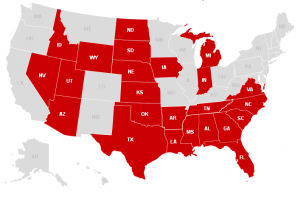Rio Grande Foundation Corrects Ten Misconceptions About Impact of Right to Work on New Mexico

(Albuquerque, NM) — In the wake of the 2014 elections, it appears that New Mexico’s Legislature may consider making the Land of Enchantment the 25th “right to work” state in the United States. The new policy brief, “Top 10 Misconceptions about Right to Work in New Mexico,” Rio Grande Foundation president Paul Gessing corrects some of the popular misunderstandings about what a law will and won’t do for our State.
As a starting point Gessing notes that “right to work” laws are first and foremost about free association. Individuals should be able to join or not join unions as they wish and should not be coerced into joining them or paying dues to them as a condition of employment.
This principle of free association is not “anti-union.” Rather, a “right to work” law means that unions have to provide real, tangible benefits to their members. It is worth noting that, according to the Center for Economic and Policy Research, 20 of the 24 states with existing “right to work” laws have higher private sector unionization rates than New Mexico.
Said Gessing, “Given New Mexico’s historical lack of a strong private sector, adopting a “right to work” law would be a logical first step for economic development.” In the paper, Gessing notes that “right to work” states have seen faster growth in jobs, per-capita income, and overall population than their “forced-unionism” brethren.
Not surprisingly, noted Gessing, “Given the fact that more and more people are voluntarily moving to live and work in ‘right to work’ states, once living costs are accounted for, residents of those states enjoy median incomes that are more than $5,000 higher than those in ‘forced-unionism’ states.” In other words, while median incomes are somewhat lower in “right to work” states, Americans continue to move to those states due to the greater worker freedom and because the reduced cost of living more than makes up for the slightly lower pay.
Lastly, according to polling data collected in August 2014 from Gallup, while Americans support unions by a 53-38 percent margin, they support “right to work” laws by much wider margins and across party lines. While it is difficult to find such widespread agreement on any issue, 77 percent of independents, 74 percent of Republicans, and 65 percent of Democrats support “right to work.”
States that currently are Right to Work are shown in red in the map below:

